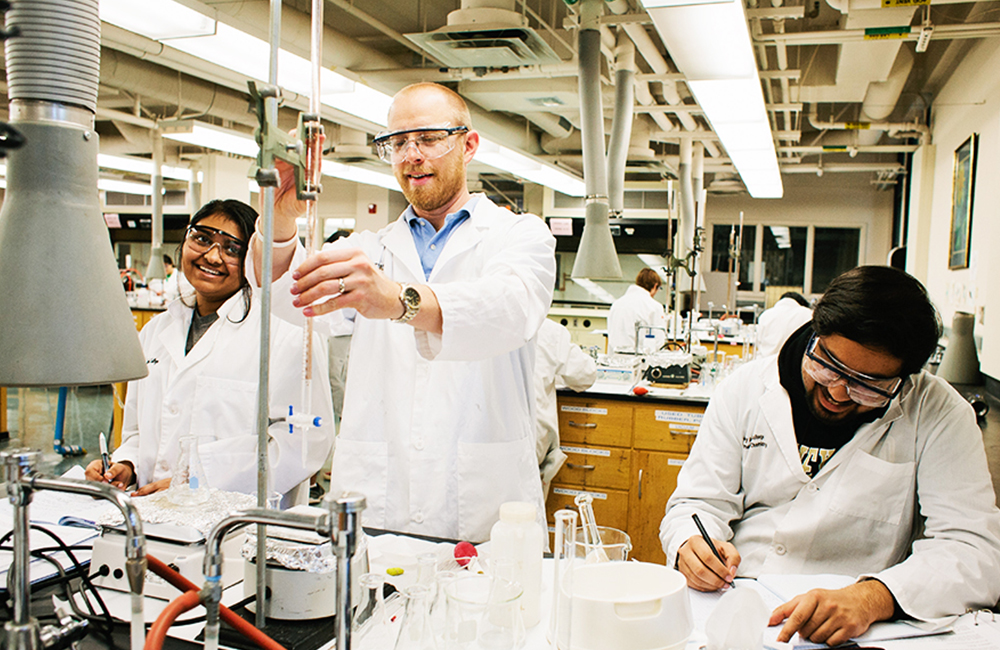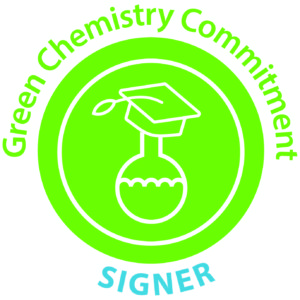HMC Chemistry Joins Green Chemistry Commitment
December 12, 2019
Faculty members in the Department of Chemistry at Harvey Mudd College challenge students to apply chemical principles and sustainable practices to solve societal problems. The department recently formalized these efforts by joining a growing cadre of likeminded institutions who are members of the Green Chemistry Commitment (GCC).
Launched in 2013 by the green chemistry outreach and education nonprofit Beyond Benign, the GCC includes more than 60 signers from 20 U.S. states, two Canadian institutions, and one institution each in Australia, Columbia, Brazil, Nigeria and Thailand. Harvey Mudd is one of only five California institutions and is the only Claremont college in the program.
As a GCC signatory, the HMC chemistry department seeks to implement green chemistry in general and in organic chemistry courses and teaching labs, incorporate green chemistry into new and existing research projects, and develop and publish new green chemistry experiments.
Throughout the history of the department, HMC chemistry faculty have included green chemistry components, sustainability topics and practices in the classroom, instructional labs and research programs. Faculty members have been at the forefront of teaching green chemistry concepts or having research projects that are specifically focused in this area. Lelia Hawkins, associate professor, researches aerosol particles in the atmosphere and teaches the chemical and physical basis of global climate change. Hal Van Ryswyk, John Stauffer Professor of Chemistry, developed a research and educational program to test lead levels in soil at local elementary schools. Katherine Van Heuvelen, associate professor, draws inspiration from nature to develop new, environmentally friendly catalysts for important reactions to degrade toxins. Gerald Van Hecke ’61, Donald A. Strauss Professor of Chemistry, teaches how chemical structure influences the physical properties and applications of modern materials. Professor of Chemistry David Vosburg, who teaches students about green organic synthesis of medicinal substances, spearheaded the effort to have the department join the GCC.

“The GCC is a reflection of what the department has already been doing,” says Vosburg, who received the 2015 ACS-CEI Award for Incorporating Sustainability into Chemistry Education and wrote a chapter in a book that celebrates the 10th anniversary of the award. “There’s a lot of interest and excitement about green chemistry and sustainability among our students.”
He says faculty members look forward to the networking opportunities, green chemistry curriculum and training offered through the GCC. The HMC chemistry department will also be able to share its programs and practices through the network.
The GCC sets a benchmark to track progress on adopting green chemistry student learning objectives, which are at the core of the program. Upon graduation, GCC institution chemistry majors are expected to have proficiency in essential green chemistry competencies that include a working knowledge of green chemistry principles, an understanding of the molecular mechanisms of how chemicals affect human health and the environment, and the ability to assess chemical products and processes and design greener alternatives when appropriate.
“Our goal is to develop new and better ways to think about chemistry that will benefit the environment, our students’ education and our research projects,” says Vosburg.
